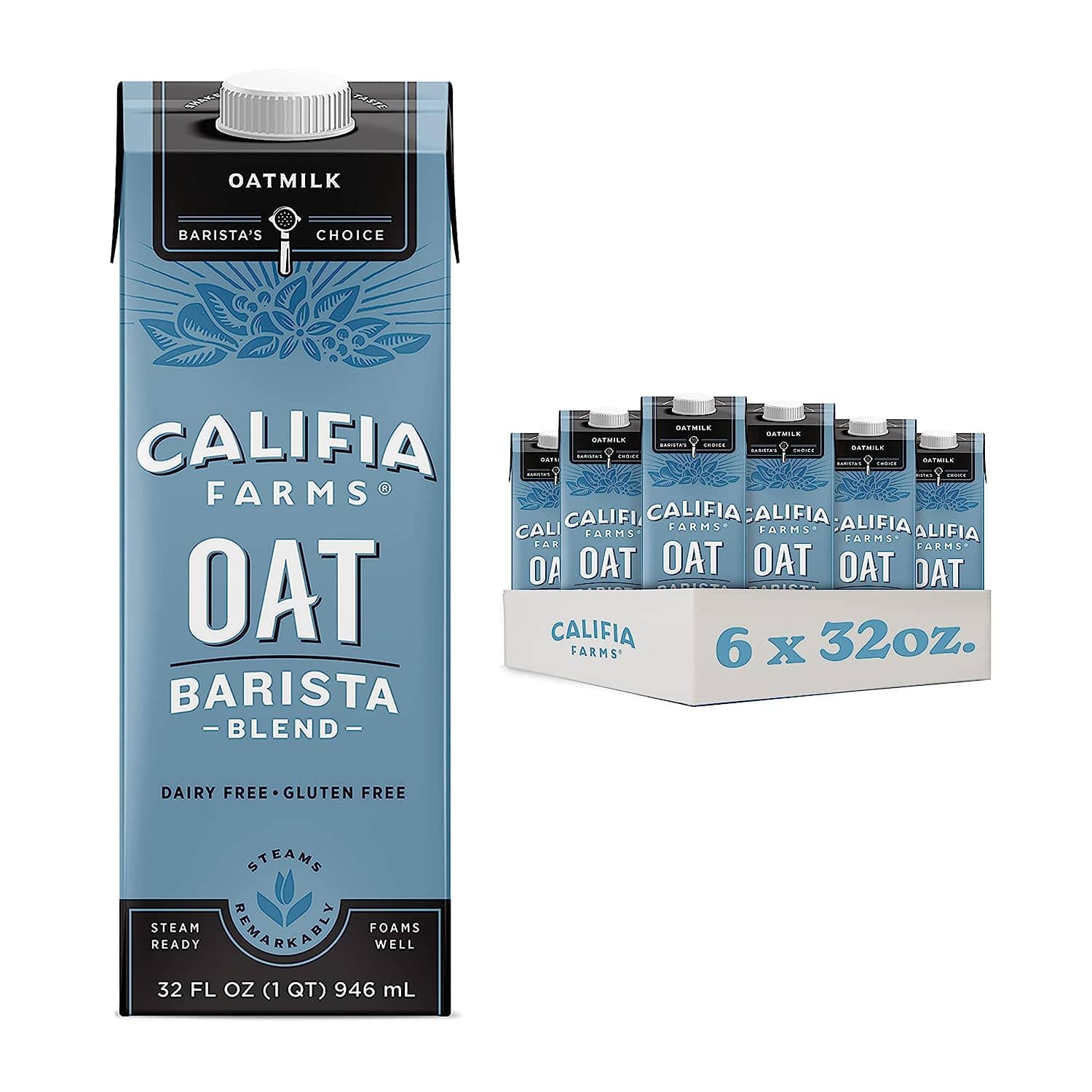Do you love drinking cappuccinos and lattes but hate how they make your stomach feel? Unfortunately, this is a common experience for many people. Even though coffee has positive health effects like helping prevent liver disease, type 2 diabetes, and other chronic illnesses, some specific drinks have been known to give people upset stomachs.
So why do some people experience an upset stomach after drinking a latte or cappuccino?
A person may experience an upset stomach after drinking a cappuccino or latte due to a lactose intolerance from the milk in both drinks, sugary syrups that cause their blood sugar to spike, or a chronic health condition that makes coffee’s acidity irritate their stomach lining.
In the rest of this article we will highlight all you need to know to enable you to enjoy your coffee to the fullest and avoid any stomach pains in the future. Let’s dive in and look at the science between coffee and upset stomachs, the ingredients that could be a problem, and what to do about it.
Related:
Can You Make Espresso in a Keurig?
Why Starbucks Coffee Tastes Burnt
Contents:
- The Role of Milk in Lattes and Cappuccinos and How it Affects You
- Popular Non-Dairy Milk Substitutes
- How Sugar and Flavoring Additives Can Cause an Upset Stomach
- How Coffee’s Acidity Can Irritate Your Stomach Lining
The Role of Milk in Lattes and Cappuccinos and How it Affects You

Unsplash Image Courtesy of Jackson Schaal
Milk is an essential ingredient in cappuccinos and lattes because it gives the coffee a smooth and creamy texture. When you froth and steam milk, it forms a foam layer that stays on top of the espresso, a signature feature of these drinks. Milk is also great for helping balance coffee’s natural bitterness.
However, milk can cause a stomach ache and other unpleasant reactions for those who have dairy allergies or are lactose intolerant. If this is the case, using non-dairy milk is a great option.
What is Lactose Intolerance?
Did you know that 30 to 50 million people are lactose intolerant? This is a condition where your body can’t at all or has some trouble digesting and breaking down a sugar found in dairy products called lactose. If you’re lactose intolerant and consume milk-based products or milk itself, you can experience unpleasant symptoms. This is because the small intestine can’t break the lactose down properly.
The symptoms of lactose intolerance can vary from person to person and depend on the amount of lactose consumed. However, they usually start within 30 minutes to 2 hours after consuming dairy products. Some of the most common include:
- Abdominal pain and cramping
- Bloating and gas
- Constipation
- Diarrhea
- Feeling of fullness after consuming dairy products
- Nausea and vomiting
To avoid these symptoms, you can limit how much dairy you eat or stop eating it entirely. This includes yogurt, cheese, milk, and ice cream. Instead, look for non-dairy alternatives or lactose-free dairy products like soy, almond, oat, or coconut milk. My favorite is oat.
You can also take lactase supplements. They’ll help break down any lactose in your body to make it easier to digest. These supplements come in liquid or pill form, and you take them right before you eat food with lactose, like a cappuccino or latte.
Buy Lactase Supplements on Amazon Here.
Popular Non-Dairy Milk Substitutes

Photo by Kaffee Meister on Unsplash
Non-dairy milk substitutes are plant-based products that you can use instead of traditional cow’s milk in your coffee or recipes. It’s common to use almonds, soy, rice, oat and coconut to make these non-dairy options. They’ve exploded in popularity in recent years due to the rise of lactose intolerance and veganism, and they usually come packed with minerals and vitamins. Califia Farms – Barista Blend Oat Milk, Ripple Non-Dairy Milk, and Silk Almond Milk are all very popular. 
Califia Farms Barista Blend Oat Milk
Main Non-Dairy Milk Benefits
There are many benefits of drinking non-dairy milk, and they include but are not limited to the following:
- No Lactose – They’re free from lactose, so you won’t deal with an upset stomach if you have a dairy allergy or are lactose intolerant.
- Plant-Based – Since these products are plant-based, they’re suitable for vegans and vegetarians to eat and use.
- Nutritious – It’s common for companies to fortify their non-dairy milk options with minerals and vitamins, like vitamin D and calcium.
- Versatile – You can use this milk substitute in virtually any beverage or recipe, including baking, smoothies, or coffee.
Types of Non-Dairy Milk and Their Nutritional Values
It’s important to note that the nutritional values may vary depending on the brand and whether the manufacturer fortifies the milk with calcium and vitamin D. It’s always a good idea to check the nutrition label before purchasing non-dairy milk, but a few standard options include:
| Milk Type | Calories
(Per Serving) |
Protein
(Per Serving) |
Fat
(Per Serving) |
Fiber
(Per Serving) |
| Almond | 30 to 60 | 1 to 2 grams | 2 to 4 grams | 1 gram |
| Soy | 80 to 100 | 7 to 9 grams | 4 to 4.5 grams | 2 to 4 grams |
| Oat | 120 to 130 | 2 to 4 grams | 5 to 6 grams | 2 to 4 grams |
The Best Non-Dairy Milk Options for Lattes and Cappuccinos
The best non-dairy milk options for cappuccinos and lattes will come down to personal preference. You may have to experiment to find the best choice for your tastes, but a few popular products are:
Almond Milk
As the name suggests, almond milk has a slightly nutty flavor and a thin consistency. This makes it a good choice for those who prefer a lighter texture in their lattes and cappuccinos. It also has fewer calories and carbohydrates than other non-dairy milk options.
Coconut Milk
Coconut milk has a rich and creamy texture, which makes it an excellent option for those who like a bold flavor in their lattes and cappuccinos. It also has a natural sweetness that can complement the taste of coffee and reduce the bitter notes. Native Forest Simple Organic Unsweetened Coconut Milk is a great choice to help mellow out your coffee-based beverage.
Oat Milk
This option has a naturally sweet flavor and a thick and creamy texture, making it a great addition to lattes and cappuccinos. It froths well and creates a velvety consistency similar to dairy milk.
Soy Milk
Soy is a popular choice for lattes and cappuccinos because it has a creamy texture and is high in protein, which makes it froth well. It also has a mild flavor that compliments the taste of coffee without being overpowering.
How Sugar and Flavoring Additives Can Cause an Upset Stomach

Photo by Tudor Adrian on Unsplash
The flavoring additives or sugar in cappuccinos and lattes can irritate the lining of your stomach. If you get a large amount of sugar in a short time, it can cause your blood sugar levels to spike. Not only does this cause digestive upset, but it can make your energy levels fall. To avoid this, a few common additives or things to look for and avoid in your lattes or cappuccinos include:
- Artificial flavorings
- Artificial sweeteners (e.g. aspartame, sucralose)
- Caramel syrup
- Chocolate syrup
- Hazelnut syrup
- High fructose corn syrup
- Powdered chocolate mixes
- Vanilla syrup
- Whipped cream
Tips for Choosing Healthier Sugar and Flavoring Options
By choosing healthier sugar and flavoring options, you can reduce the negative impact on your stomach and promote better overall health. The following can help you do just that:
- Avoid Artificial Flavorings: Look for drinks that use natural flavorings like vanilla extract or cocoa powder instead of artificial ones.
- Choose Natural Sweeteners: Opt for natural sweeteners like honey, maple syrup, or agave nectar instead of artificial sweeteners or high fructose corn syrup.
- Look for Sugar-Free Options: Choose sugar-free syrups or flavorings to reduce your sugar intake, like DaVinci Gourmet Sugar Free Syrup for example.
- Make Your Own Flavoring: Create your flavorings using natural ingredients like cinnamon, ginger, or mint leaves.
How Coffee’s Acidity Can Irritate Your Stomach Lining

Photo via Canva
The acidity in coffee can upset your stomach because it stimulates gastric acid production, which can irritate your stomach lining. It can also cause acid reflux, heartburn, and digestive issues.
The Impact of Brewing Methods on Coffee’s Acidity Levels
The brewing method can determine how acidic your coffee-based beverage is. Some methods reduce the acid better than others, so consider the following:
- Cold Brew: Cold brew coffee has a lower acidity level because you steep the coffee in cold water for an extended period, resulting in a smoother, less acidic flavor.
- Drip Coffee: Drip coffee tends to have a higher acidity level because the hot water used in the brewing process extracts more of the acidic compounds from the coffee beans.
- Espresso: Espresso has a high acidity level due to the pressure used in the brewing process, which extracts more acidic compounds from the coffee beans.
- French Press: French press coffee usually has a lower acidity level because you steep the coffee in water rather than expose it to hot water for an extended time.
So, along with watching your brewing methods and picking something like cold brew or nitro cold brew for the lowest acidity, adding a non-dairy milk alternative to your latte or cappuccino reduces your chances of an upset stomach. It can also help you get a smoother flavor, and you’ll get a sweeter, less bitter drink.
Conclusion
Now you know that drinking cappuccinos and lattes can cause an upset stomach due to the milk content, lactose intolerance, sugar and flavoring additives, and coffee's acidity.
However, by using non-dairy milk options, less acidic brewing methods, and natural sweeteners, you can reduce this negative impact on your stomach and still enjoy the occasional cappuccino or latte. Experimenting with different options and finding what works best for you can help you create a delicious and stomach-friendly coffee routine.


